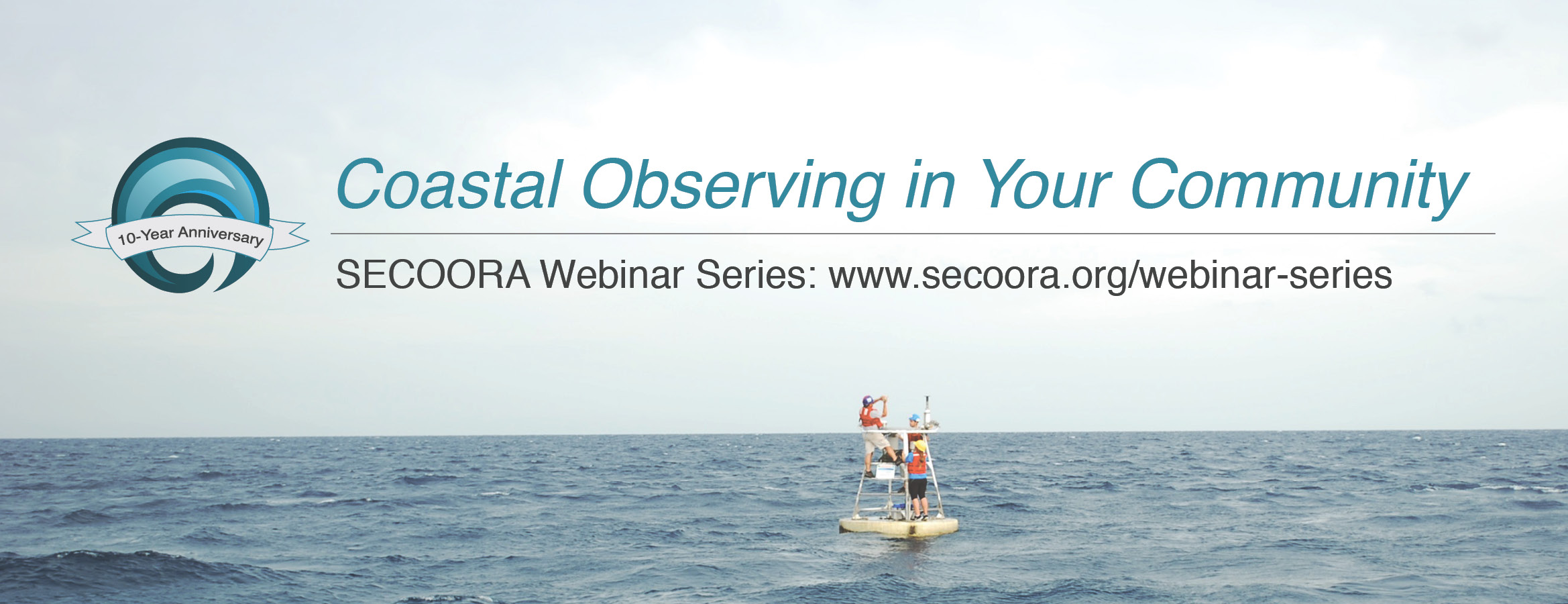Join us for a webinar on Wednesday September 6, 12 PM ET. Dr. Rouying, North Carolina State University, will report on efforts in evaluating the performance of the coupled modeling system.
Reserve your spot now! Download Flyer
Webinar Information
Title: Predicting Marine Physical-Biogeochemical Variability in the Gulf of Mexico and Southeastern U.S. Shelf Seas
Date: Wednesday – September 6, 2017
Time: 12 – 1 PM ET
Presenter: Dr. Ruoying He, Distinguished Professor of North Carolina State University
An integrated marine environment prediction system is developed and used to investigate marine physical-biogeochemical variability in the Gulf of Mexico and southeastern U.S. shelf seas. Such variability stem from variations in the shelf circulation, boundary current dynamics, impacts of severe weather forcing, as well as growing population and associated land use practices on transport of carbon and nutrients within terrestrial systems and their delivery to the coastal ocean. We will report our efforts in evaluating the performance of the coupled modeling system via extensive model and data comparisons, as well as findings from a suite of case studies.
About the Presenter
 Dr. He is a Distinguished Professor of North Carolina State University and an Adjunct Scientist of Woods Hole Oceanographic Institution. His research expertise spans from coastal circulation dynamics, air-sea interaction, to biophysical interactions. As the director of the Ocean Observing and Modeling Group (OOMG), he conducts coastal ocean observations, remote sensing data analyses, and also leads the development of prediction models of ocean circulation, air-sea-wave interactions, physical-biogeochemical couplings, as well as data assimilation.
Dr. He is a Distinguished Professor of North Carolina State University and an Adjunct Scientist of Woods Hole Oceanographic Institution. His research expertise spans from coastal circulation dynamics, air-sea interaction, to biophysical interactions. As the director of the Ocean Observing and Modeling Group (OOMG), he conducts coastal ocean observations, remote sensing data analyses, and also leads the development of prediction models of ocean circulation, air-sea-wave interactions, physical-biogeochemical couplings, as well as data assimilation.
Related news

New High Frequency Radar at the Dry Tortugas National Park Improves Ocean Surface Current Measurements Across the Straits of Florida
A new CODAR Low-Power SeaSonde HFR has been deployed by the University of South Florida at Fort Jefferson on Garden Key to measure surface currents to improve understanding and prediction of the Gulf of Mexico Loop Current.

President Biden Proposes Significant Budget Cuts to IOOS for 2025
President Biden’s recent 2025 budget proposal slashed the funding allocated for the Integrated Ocean Observing System (IOOS) by 76%, which would effectively shut down coastal and ocean observing efforts.

Webinar: NOAA Resources to Help Coastal Communities Understand Flood Risk
Join us Wednesday, March 27th at 12 PM Eastern Time for SECOORA's Coastal Observing in Your Community Webinar Series to hear from Doug Marcy with the NOAA Office for Coastal Management.
